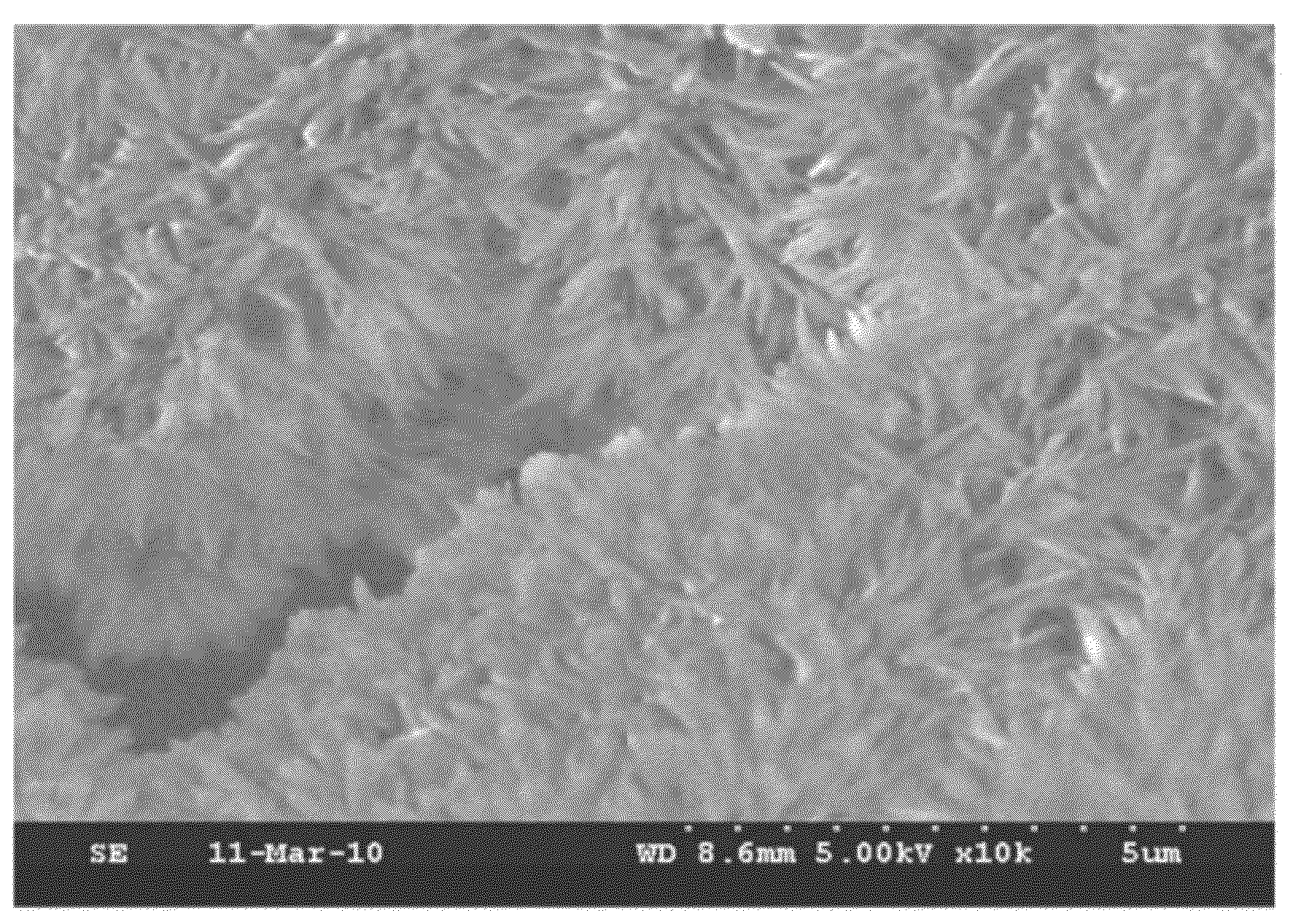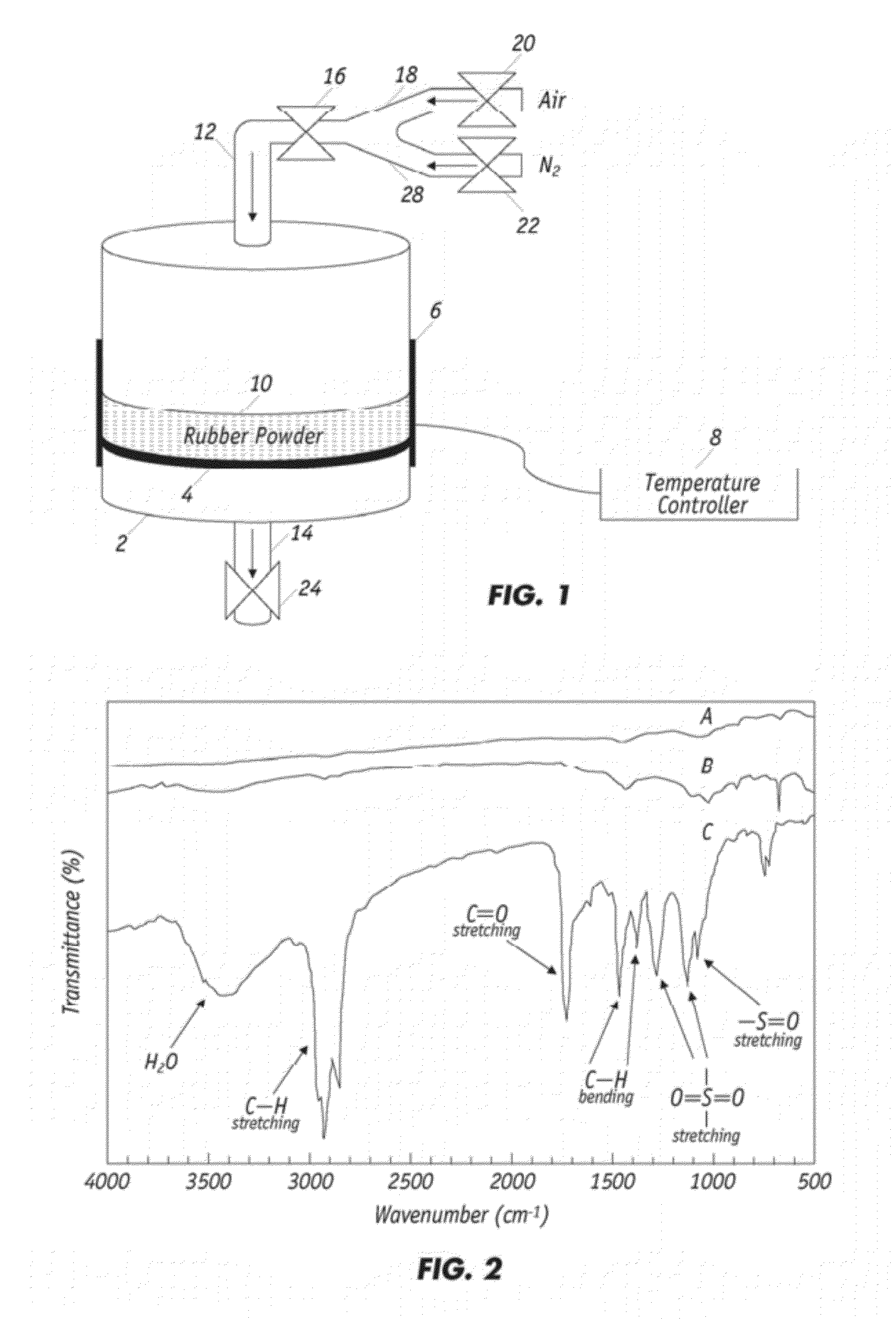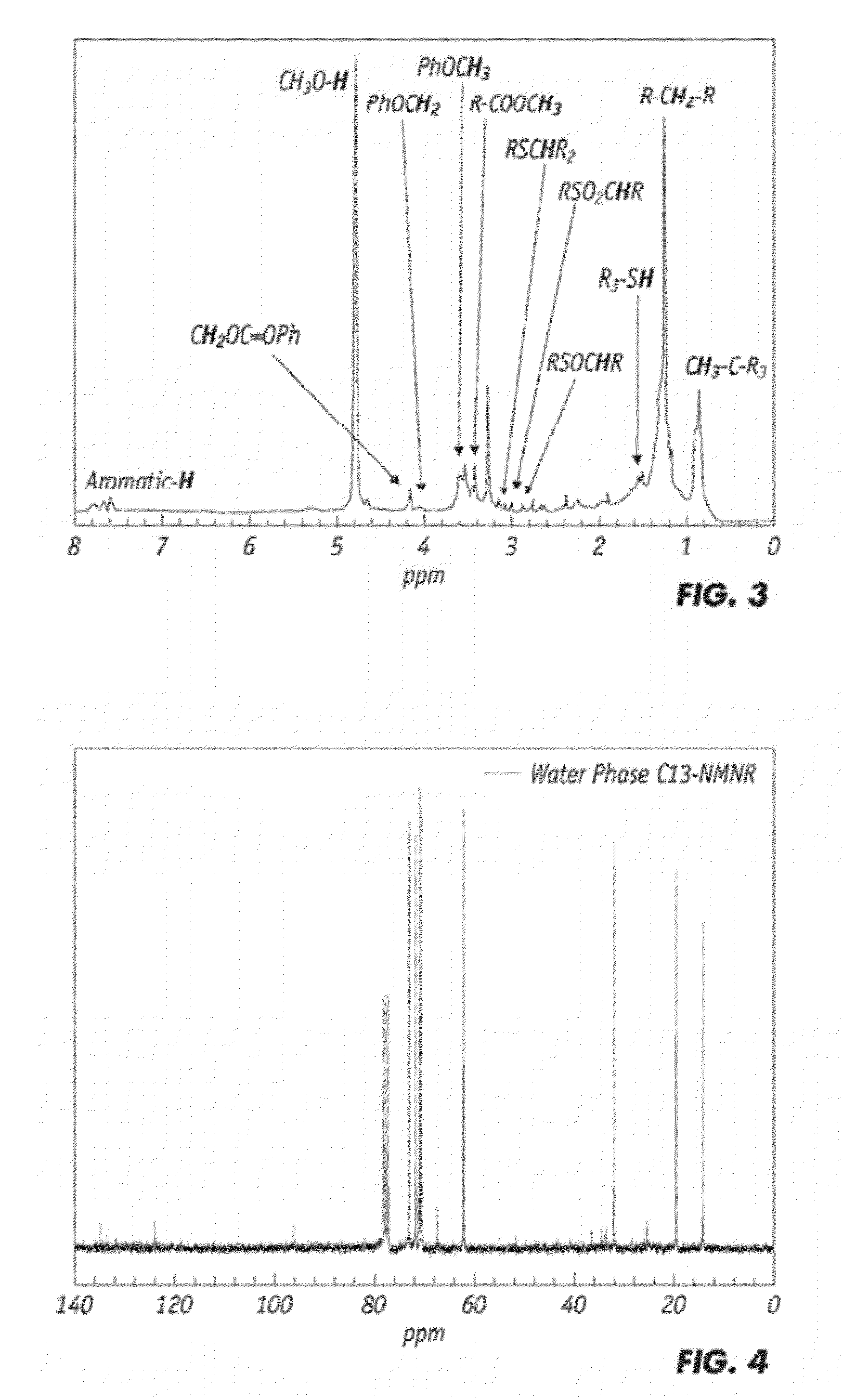Method for Producing Improved Rubberized Concrete using Waste Rubber Tires
a technology of rubberized concrete and waste rubber tires, which is applied in the direction of climate sustainability, textiles and papermaking, solid waste management, etc., can solve the problems of reducing the compressive strength and splitting tensile strength of the resulting rubberized concrete proportionally, severely restricting the amount of crumb rubber that can be incorporated, and curtailing the application range of rubberized concrete. , to achieve the effect of improving mechanical properties, facilitating bonding, and excellent bonding agen
- Summary
- Abstract
- Description
- Claims
- Application Information
AI Technical Summary
Benefits of technology
Problems solved by technology
Method used
Image
Examples
example 1
[0040]To analyze the effects of varying partial oxidation conditions, waste rubber tires were mechanically grounded and screened to 300-600 μm. The rubber crumbs were placed into a laboratory reactor as configured in FIG. 1. A mixture of air and nitrogen gas at an A / N of 1.25 was fed through the reactor for 30 minutes before sealing the reactor. Partial oxidation was carried out by raising the reactor temperature to 150° C. for a period of one hour and allowed to cool to room temperature. Partially oxidized rubber particles were removed from the reactor and gas condensate was removed with acetone. A way of avoiding over oxidation is to visually inspect the partially oxidized rubber particles to make sure they are sticky and oily in appearance. At least a measurable amount of gas condensate was collected from the reactor by rinsing with acetone. Partial oxidation was repeated on fresh crumb rubber at 200° C. and 250° C.
example 2
[0041]Partially oxidized crumb rubber particles along with co-produced gas condensate formed at the three temperatures of Example 1 were separately collected and mixed with Portland cement to prepare specimens of rubberized cement for comparison. Portland cement from Taiwan Cement Company was used. Table 1 lists the components in the cement.
TABLE 1Weight %ComponentAverageRangeCaO6359-65SiO22219-25Al2O375-9Fe2O331-5MgO21-4SO321-3
[0042]In preparing mortar specimens for testing, Portland cement with standard Ottawa sand (from U.S. Silica Company) was mixed with 0, 1.5, 3.0, 4.5, and 6.0 wt % of the rubber particles along with the associated gas condensate, which were partially oxidized at 150, 200, and 250° C. Specimens containing only untreated rubber particles, cement and sand were also prepared as controls. Water was added to the mixtures at a weight ratio of 0.62:1 for the hydration to prepare the concrete specimens, which were allowed to set for 3, 7, 14, 28, and 56 days before te...
example 3
[0043]In this example, the compressive strengths of the concrete specimens prepared in Example 2 were measured using ASTM standard method C109. The test results are summarized in Table 2.
TABLE 2Concrete Compressive Strength (MPa)Rubber Additive56Content (wt %)Treatment3 Days7 Days14 Days28 DaysDays0—19.324.929.734.839.21.5Untreated14.622.123.327.428.61.5150° C.12.117.121.123.528.01.5200° C.12.117.121.624.228.81.5250° C.20.928.932.636.940.93.0Untreated8.312.212.615.516.53.0150° C.11.215.218.118.320.63.0200° C.11.116.219.820.624.03.0250° C.13.820.522.426.228.04.5Untreated9.510.713.115.217.44.5150° C.11.412.413.415.218.04.5200° C.10.613.513.516.018.14.5250° C.30.040.745.145.356.36.0Untreated9.511.014.516.319.46.0150° C.7.48.512.714.216.16.0200° C.9.110.713.215.316.46.0250° C.21.432.136.441.242.1
[0044]The data demonstrate that adding untreated rubber particles to cement mix weakens the compressive strength of the rubberized concrete in proportional to the amount of untreated rubber adde...
PUM
| Property | Measurement | Unit |
|---|---|---|
| wt % | aaaaa | aaaaa |
| wt % | aaaaa | aaaaa |
| wt % | aaaaa | aaaaa |
Abstract
Description
Claims
Application Information
 Login to View More
Login to View More - R&D
- Intellectual Property
- Life Sciences
- Materials
- Tech Scout
- Unparalleled Data Quality
- Higher Quality Content
- 60% Fewer Hallucinations
Browse by: Latest US Patents, China's latest patents, Technical Efficacy Thesaurus, Application Domain, Technology Topic, Popular Technical Reports.
© 2025 PatSnap. All rights reserved.Legal|Privacy policy|Modern Slavery Act Transparency Statement|Sitemap|About US| Contact US: help@patsnap.com



